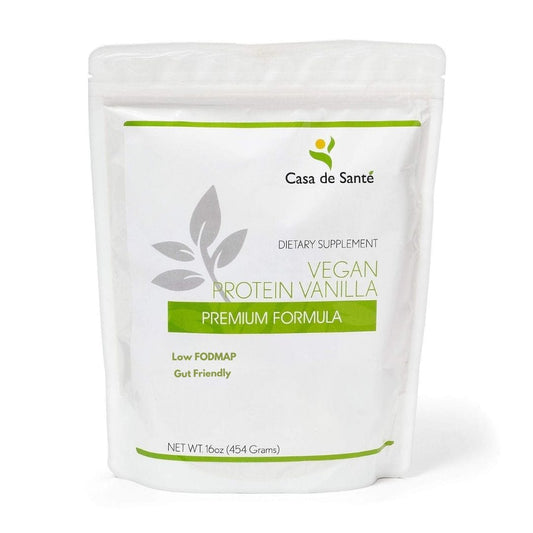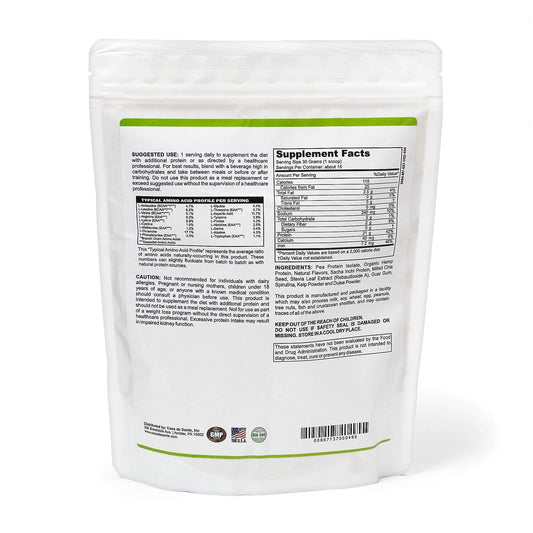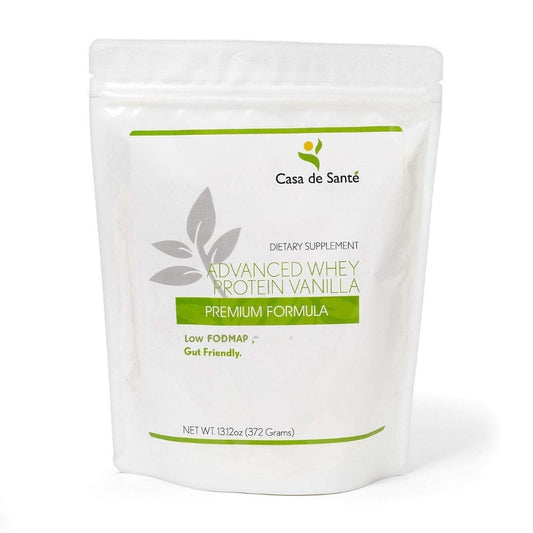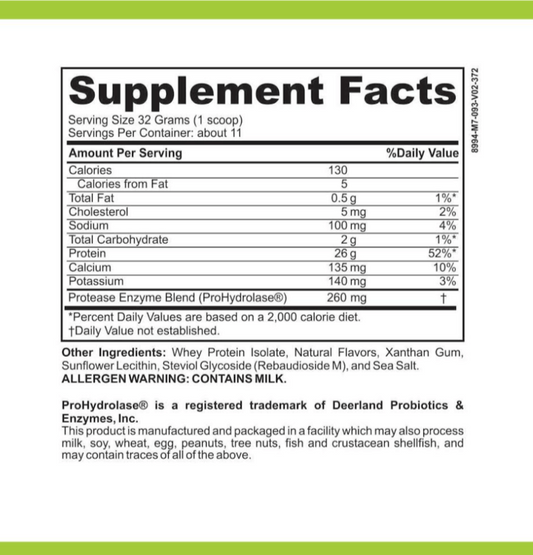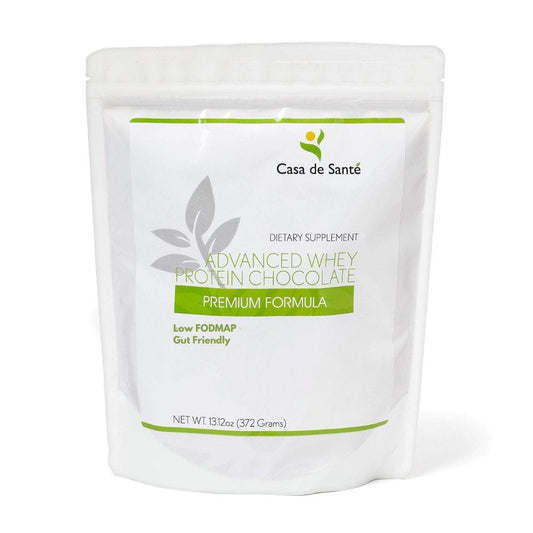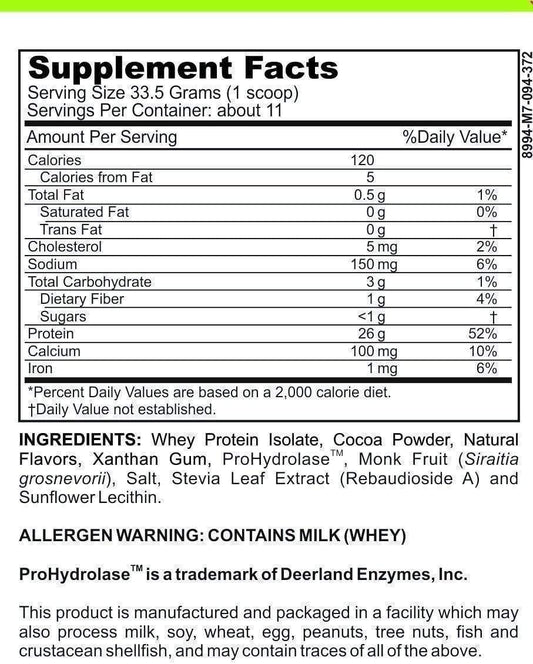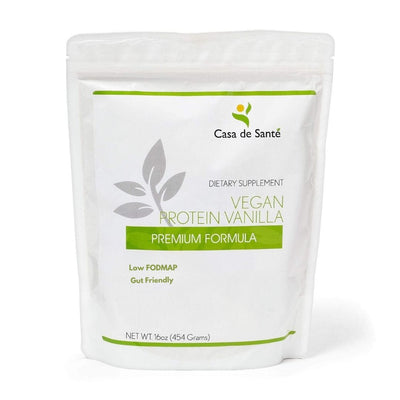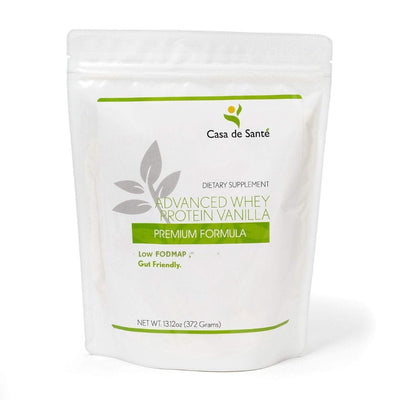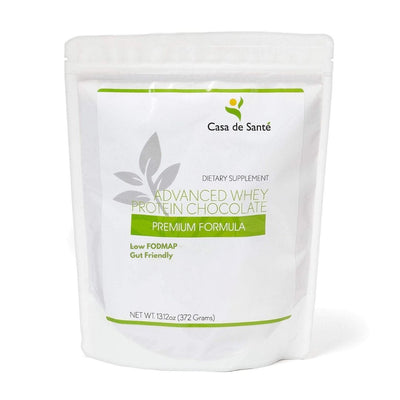Is Xanthan Gum Paleo
Is Xanthan Gum Paleo
The Paleo diet has gained significant popularity in recent years due to its focus on consuming foods that our ancestors would have eaten during the Paleolithic era. This diet emphasizes whole, unprocessed foods and avoids grains, dairy, and processed sugars. But what about ingredients like xanthan gum? Is xanthan gum considered paleo-friendly? Let's dive into the details and explore this topic further.
Understanding the Paleo Diet
The Paleo diet is based on the premise that our bodies are best adapted to the foods that our ancestors consumed before the advent of agriculture. It promotes the consumption of lean meats, fish, fruits, vegetables, nuts, and seeds while eliminating grains, legumes, dairy, processed sugars, and artificial additives.
The Paleo diet has gained popularity in recent years due to its focus on whole, unprocessed foods and its potential health benefits. By mimicking the eating habits of our Paleolithic ancestors, proponents of the diet believe that it can help improve overall health and well-being.
Basic Principles of the Paleo Diet
The Paleo diet revolves around a few key principles:
- Eating whole, unprocessed foods: The Paleo diet encourages the consumption of foods that are as close to their natural state as possible. This means avoiding processed foods that are often high in added sugars, unhealthy fats, and artificial additives.
- Emphasizing animal protein sources: The diet places a strong emphasis on consuming lean meats, such as grass-fed beef, free-range poultry, and wild-caught fish. These animal protein sources are rich in essential nutrients like iron, zinc, and omega-3 fatty acids.
- Avoiding grains, legumes, and dairy: The Paleo diet excludes grains, legumes (such as beans and lentils), and dairy products. These food groups are believed to be less compatible with our bodies' natural digestive systems.
- Eating a variety of fruits and vegetables: The diet encourages the consumption of a wide range of fruits and vegetables, which provide essential vitamins, minerals, and antioxidants. These nutrient-dense foods are believed to support optimal health and well-being.
- Eliminating processed sugars and artificial additives: The Paleo diet promotes the avoidance of processed sugars, such as those found in sodas, candies, and baked goods. Instead, natural sweeteners like honey or maple syrup can be used in moderation. Additionally, artificial additives and preservatives are also discouraged.
Common Foods in the Paleo Diet
Examples of foods that are commonly consumed on the Paleo diet include:
- Grass-fed meats: These meats come from animals that have been raised on a natural diet, resulting in higher levels of beneficial nutrients like omega-3 fatty acids.
- Wild-caught fish and seafood: Fish and seafood are excellent sources of protein and omega-3 fatty acids. Opting for wild-caught varieties ensures a more natural and sustainable food source.
- Fruits and vegetables: The Paleo diet encourages the consumption of a wide variety of fruits and vegetables, which provide essential vitamins, minerals, and fiber.
- Nuts and seeds: These are nutrient-dense foods that provide healthy fats, protein, and fiber. They can be enjoyed as snacks or added to meals for extra crunch and flavor.
- Healthy fats like avocados and olive oil: The Paleo diet promotes the consumption of healthy fats, such as those found in avocados and olive oil. These fats are believed to support heart health and provide a feeling of satiety.
By following the principles of the Paleo diet and incorporating these common foods into their meals, individuals can potentially experience improved energy levels, weight management, and overall well-being. However, it's important to note that the diet may not be suitable for everyone, and consulting with a healthcare professional is recommended before making any significant dietary changes.
What is Xanthan Gum?
Xanthan gum is a food additive that is commonly used as a thickening agent and stabilizer in a variety of processed foods. It is produced through a fermentation process involving the bacteria Xanthomonas campestris, which is then purified and dried to form a powder.
But how exactly is xanthan gum produced? Let's take a closer look at the production process:
The Production Process of Xanthan Gum
The production of xanthan gum involves several steps:
- Cultivating Xanthomonas campestris bacteria: To start the production process, Xanthomonas campestris bacteria are carefully cultivated. These bacteria are known for their ability to produce xanthan gum through fermentation.
- Feeding the bacteria with a sugar source: Once the bacteria are ready, they are provided with a sugar source, typically corn syrup. The bacteria consume the sugar and convert it into xanthan gum through their metabolic processes.
- Allowing the bacteria to ferment and produce xanthan gum: The bacteria are then left to ferment in a controlled environment. During this fermentation process, they produce xanthan gum as a byproduct. The conditions, such as temperature and pH, are carefully monitored to ensure optimal gum production.
- Isolating and purifying the xanthan gum: After the fermentation process is complete, the mixture containing the bacteria and xanthan gum is separated. The xanthan gum is then isolated and purified to remove any impurities or unwanted substances.
- Drying the purified gum into a powder: The purified xanthan gum is finally dried to remove any remaining moisture. This drying process transforms the gum into a fine powder, which is easier to handle and store.
Now that we know how xanthan gum is produced, let's explore its common uses in the food industry:
Common Uses of Xanthan Gum in Food
Xanthan gum is known for its ability to improve the texture and stability of foods. Here are some common uses:
- Thickening sauces, dressings, and gravies: Xanthan gum is often added to various sauces, dressings, and gravies to enhance their thickness and create a smooth, consistent texture. It helps prevent separation and ensures a more enjoyable eating experience.
- Preventing ice crystals in frozen desserts: When used in frozen desserts like ice cream, xanthan gum acts as a stabilizer, preventing the formation of ice crystals. This results in a smoother and creamier texture, enhancing the overall quality of the dessert.
- Creating a smooth texture in gluten-free baked goods: Gluten-free baking can be challenging due to the absence of gluten, which provides structure and elasticity. Xanthan gum is often used as a substitute for gluten, helping to bind the ingredients together and create a desirable texture in gluten-free baked goods.
- Enhancing the shelf life of certain products: Xanthan gum can also contribute to extending the shelf life of certain food products. Its ability to improve stability and prevent separation helps maintain the quality and freshness of various processed foods, allowing them to have a longer shelf life.
As you can see, xanthan gum plays a crucial role in the food industry, providing texture, stability, and improved shelf life to a wide range of processed foods. Its versatility and effectiveness make it a valuable ingredient in many culinary creations.
The Controversy Surrounding Xanthan Gum and the Paleo Diet
When it comes to determining whether xanthan gum is considered paleo, there are differing opinions within the community. Let's take a look at the arguments for and against its inclusion in a paleo diet.
Arguments for Xanthan Gum Being Paleo
Supporters of including xanthan gum in a paleo diet argue that it is a naturally derived ingredient and can be consumed in moderation without adverse effects. They believe that its use in small amounts does not significantly deviate from the core principles of the diet.
One of the main reasons why proponents of xanthan gum consider it paleo-friendly is its source. Xanthan gum is derived from the fermentation of sugars, typically from corn, soy, or wheat. This fermentation process involves the use of bacteria called Xanthomonas campestris, which produces a slimy substance that is then dried and ground into a fine powder. Since the bacteria used in the process are naturally occurring, supporters argue that xanthan gum can be classified as a natural ingredient.
Furthermore, xanthan gum is often used in small quantities as a thickening agent or stabilizer in various paleo-friendly recipes. It can improve the texture and consistency of sauces, dressings, and baked goods without the need for grains or other non-paleo ingredients. Proponents believe that as long as xanthan gum is used sparingly and in recipes that are otherwise compliant with the paleo diet, it can be a valuable tool in creating delicious and satisfying meals.
Arguments against Xanthan Gum Being Paleo
Opponents of including xanthan gum in a paleo diet argue that it is a processed additive and therefore not in line with the diet's focus on whole, unprocessed foods. They contend that consuming xanthan gum may have unintended consequences on gut health and immune function.
One of the main concerns raised by critics is the potential impact of xanthan gum on gut health. While it is true that xanthan gum is derived from natural sources, the process of isolating and refining it into a powdered form involves several steps. Some argue that these processing steps may strip away certain beneficial components found in the original ingredients, leaving behind a substance that could potentially disrupt the delicate balance of the gut microbiome.
Additionally, opponents of xanthan gum point out that it is often used as a substitute for gluten in gluten-free recipes. This raises concerns for individuals who follow a paleo diet due to gluten intolerance or sensitivity. While xanthan gum itself does not contain gluten, its use as a replacement for gluten in recipes may give the impression that it is a suitable alternative for those avoiding gluten. Critics argue that this can be misleading and may lead to individuals consuming xanthan gum unnecessarily or in larger quantities than necessary.
Furthermore, some studies suggest that xanthan gum may have an impact on immune function. It has been found to increase the production of certain pro-inflammatory cytokines in immune cells, potentially triggering an immune response in susceptible individuals. Critics argue that this immune response could have negative consequences for those with autoimmune conditions or compromised immune systems.
In conclusion, the controversy surrounding whether xanthan gum is considered paleo stems from differing opinions on its natural derivation, processing methods, and potential effects on gut health and immune function. While supporters argue that it can be used in moderation without adverse effects, opponents contend that its processed nature and potential impact on health make it incompatible with the principles of the paleo diet.
Nutritional Profile of Xanthan Gum
From a nutritional standpoint, xanthan gum is relatively low in calories and does not contribute significant amounts of carbohydrates, fat, or protein to the diet. It is primarily used for its functional properties rather than its nutritional value.
Potential Health Benefits of Xanthan Gum
While xanthan gum may not offer notable nutritional benefits, it does provide some functional advantages. These include improved texture, increased stability, and enhanced shelf life of certain food products.
Possible Side Effects of Xanthan Gum
Some individuals may experience digestive discomfort, such as bloating or gas, when consuming foods containing xanthan gum. However, these side effects are generally rare and occur primarily in individuals who are sensitive or intolerant to the additive.
Alternatives to Xanthan Gum in a Paleo Diet
If you follow a paleo diet but prefer to avoid xanthan gum, there are natural alternatives available. These alternatives can help achieve similar textural results without relying on processed additives.
Natural Thickeners Compatible with Paleo Diet
Some natural thickeners that are considered paleo-friendly include:
- Arrowroot powder
- Tapioca flour
- Ground chia seeds
- Gelatin or agar agar
How to Use These Alternatives in Cooking
When using natural thickeners as alternatives to xanthan gum, it's important to follow specific instructions for each substance. Experimenting with different proportions and methods can help achieve desired results while maintaining the principles of the paleo diet.
In Conclusion
The question of whether xanthan gum is paleo-friendly remains a topic of debate within the Paleo diet community. While it is a derived ingredient and does not align with the emphasis on whole, unprocessed foods, its use in small quantities may be deemed acceptable by some individuals. However, if you prefer to avoid xanthan gum altogether, there are natural alternatives available that can help achieve similar results in your paleo cooking endeavors. Ultimately, the decision on whether to include xanthan gum in your paleo diet comes down to personal preferences and goals.

